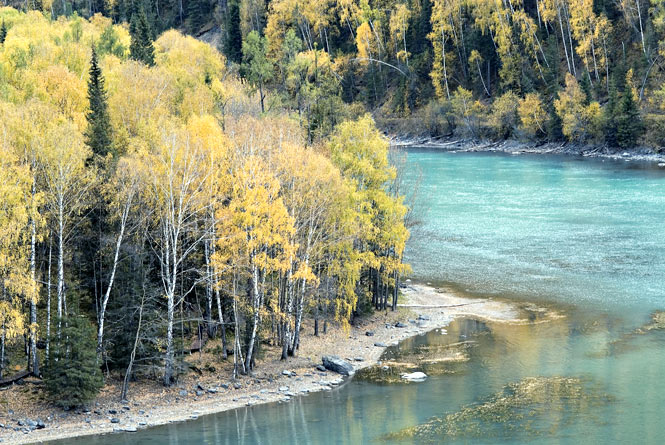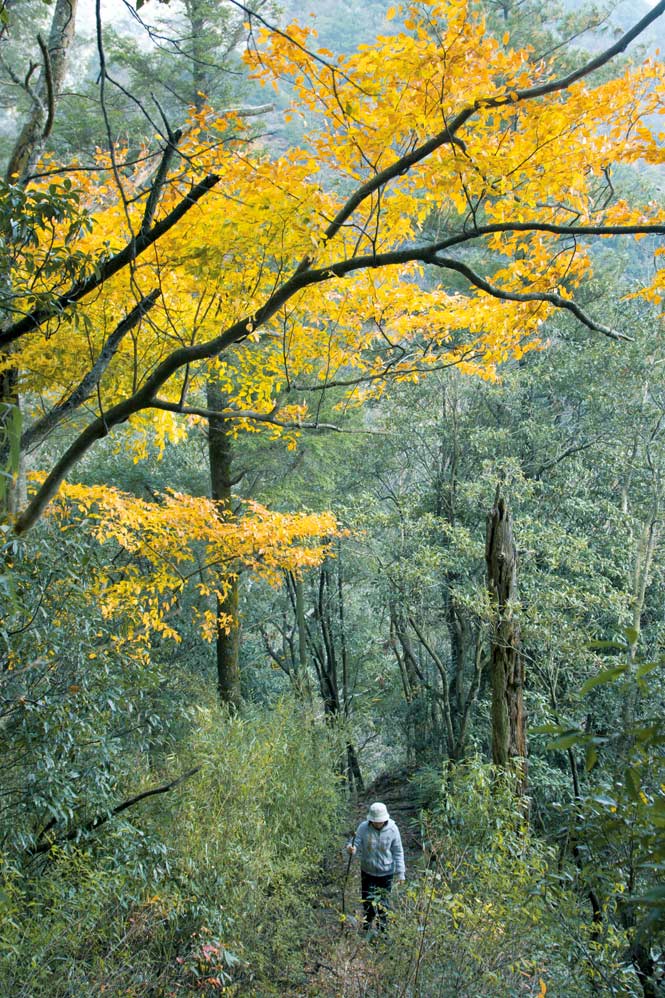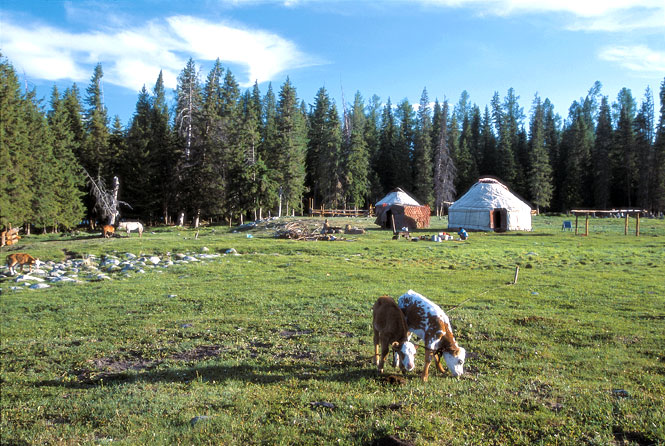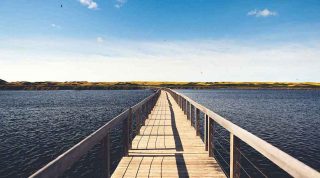Above: Kanas Lake, near the border with Russia and Mongolia.
Taking the measure of China’s best treks.
By Victor Paul Borg
Photographs by Victor Paul Borg
With its vast western hinterland jutting into Central Asia, western China offers an incredible range of trekking options. Some of the most spectacular mountain trails in the world can be hiked in the southwestern provinces of Yunnan and Sichuan, where dense, steep ranges divide the East Asian lowlands from the Tibetan highlands. The varied terrain in this corner of the Middle Kingdom is matched by an array of distinctive ethnic groups and one of the richest repertoires of species to be found in temperate climes, making it a first-class destination for nature lovers. Closer to the Russian border in Xinjiang, intrepid hikers with a fondness for meadows and taiga forests can get a taste of Siberia in a vast, newly created nature preserve.
White-Water Ramble
China’s most famous trek passes through Tiger Leaping Gorge, where the Yangtze River has gouged a great slash through the landscape. This is one of the deepest ravines in the world; it’s a staggering four kilometers from the gorge’s bottom to the snow-dusted peaks of Jade Dragon Snow Mountain. With its trailhead easily accessed from the World Heritage–listed Old Town of Lijiang, the 23-kilometer trek is now a solid fixture on the backpackers’ circuit in China. The trail stretches halfway up the gorge, about two kilometers above the glinting white water of the Yangtze, and along its route it passes Tibetan hamlets and a tableau of terraced fields interspersed with meadows and pine forests. The path then descends to the river at the village of Hetao Yuan (“Walnut Garden”), where, after an eight-hour slog, the budget guesthouses feel like the height of luxury. Visit tigerleapinggorge.com for more information.
Abode of the Gods
The trail and guesthouses along Tiger Leaping Gorge are full of camaraderie, but if you want to head somewhere less well traveled, bypass the gorge and press on toward Kawa Gebo (a.k.a. Meli Xue Shan) in Yunnan’s Deqin prefecture. This mountain is the province’s highest at 6,740 meters, and its massive 12-kilometer-long glacier snakes down to the low point in the valley just above Mingyong, the trailhead village. Mingyong is home to a handful of Tibetan inhabitants who live in traditional stone farmhouses, making it an attraction in its own right. In the mornings, you’ll wake to the chanting of mantras and the aroma of pine branches smoldering in household Buddhist shrines.
According to Tibetan legend, Kawa Gebo is the abode of the gods, and the trail upslope from the village is used by pilgrims who, in fits of exultation, leave behind offerings—pieces of clothing, prayer flags, and even clumps of hair torn out in pious fervor and tucked in chinks in the natural stone wall that flanks the track. The steep, seven-kilometer trail ends at the Linhua Temple, where pilgrims pay homage to the venerated mountain that towers above, with its Mingyong Glacier stepping up in ice-blocks of brilliant white snow. In the summer, you can regularly hear the rumbles of avalanches.
King of Mountains
Farther north in Sichuan, Gongga Shan is an even more forbidding summit that peaks at 7,556 meters. It has been dubbed the King of Mountains, and it plays host to the mother of all China treks: a 12-day loop trek around the mountain that rises to 4,880 meters at the pass of Da Xue Shan range, where the view of undulating Tibetan grasslands stretches to the horizon. Another highlight along the trail is the Gangkar Monastery, an old Buddhist hermitage set below the saw-toothed granite peaks of Gongga Shan. There are easier options, including shorter hikes of three days that still take in a cross-section of landscapes and sights, particularly the temples, glaciers, pine forests, and nomadic herders’ encampments. For arranging a journey, your best bet is with Tibetan Trekking (tibetantrekking.com).
Meandering Through Micang
Elsewhere in Sichuan, the range of mountains at the northeastern part of the province holds some of the least-touched landscapes on earth. Protected in a contiguous straggle of nature reserves, they are home to an impressive array of species including pandas. One of the best areas for walking is Micang Shan in Guangyuan. The trekking setup is good: accommodation is either in the single hotel inside the reserve or a homestay with two farming families. A series of trails fan out from the hotel, the most popular of which winds up to a nearby peak (two hours of walking) where you get the best views of Micang’s flat-topped mountains. The longest trail is a loop that takes about seven hours and penetrates the untouched forests and dramatic gorges at the reserve’s core. Look out for golden pheasants, which can frequently be spotted in the underbrush along the slopes. It is possible to trek independently in Micang as the trails are well marked, but getting there from Chengdu, the Sichuan capital, requires a car and driver. For this, make arrangements through the dependable Yun Du Shang Wu (ydqczl.cn) travel agency.
A Slice of Siberia
No survey of trekking in China would be complete without a mention of Kanas National Park, a newly created preserve that covers an area roughly nine times the size of Hong Kong. Accessed via Urumqi, the capital of the Xinjiang Uygur Autonomous Region, it’s set in the northernmost tip of western China, where the Altai Mountains carry a slice of Siberia into China—taiga forests, flower-filled meadows, clear green lakes, and Eurasian birds like swans and snowy owls. It’s also home to the famously merry Tuwa people, an ethnic group of herders who migrated from the north hundreds of years ago and now live in three villages that consist of log farmhouses. Some Tuwa have now converted the interiors of their houses into lodgings for tourists, providing bases for a variety of treks throughout the park.
The most rewarding trek is the two-day journey from Hemu village to Kanas Lake; another possibility is to stay at the village on the banks of Kanas Lake and make a variety of day treks to neighboring grasslands and lakes. The only tour operator able to help with arrangements is Pepper Mountains (peppermountains.com).
Originally appeared in the August/September 2010 print issue of DestinAsian magazine (“Westward Ho!”)











